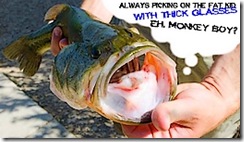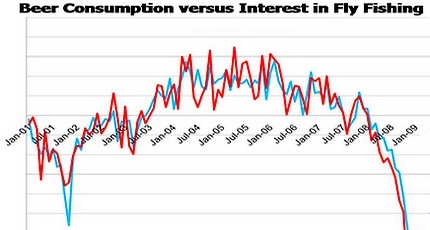 Only recently recovered from the attempt to make Striped Bass the killer of all salmonids, and now on the eve of my Spring Shad orgy, West Coast scientists are suddenly spraying my favorite quarry with the invasive label.
Only recently recovered from the attempt to make Striped Bass the killer of all salmonids, and now on the eve of my Spring Shad orgy, West Coast scientists are suddenly spraying my favorite quarry with the invasive label.
… and while they readily admit that most of the science on American Shad has been done on the East Coast, and very little is known of our Western invasive cousin, now that we’ve extincted the Pacific Salmon, we’re sure to find the American Shad had a hand in it.
All of which causes me to burst into tears, given that Science can never bring themselves to admit we paved, screwed, and ate, anything that was tasty – and are even now grinding up and coloring everything that isn’t ..
So the last big anadromous fishery left on the Pacific Coast, needs to be kilt off because they weren’t invited? How about you restore some urban stream to a healthy population of salmon and then we’ll talk – and not before.
This month Fisheries Magazine features a couple of articles on the American Shad, the first relating the efforts to get them here, and the second relating to how their spread along the Pacific Coast might have altered the environment for our Pacific Salmon, how they may have had a hand in both helping and extincting same.
Young shad dine on similar freshwater foods as young salmon, young shad may provide more food for known salmon predators like my beloved Northern Pikeminnow, allowing them to survive in greater numbers to prey upon young salmon, and Shad may have been host to saltwater parasites that spread to both salmon and humans in freshwater.
But they’re not really all that sure of any of it …
In fact, it is out of concern specifically for salmon that biologists now seriously contemplate the ecological role of shad in the Columbia River. For some, the “scientific” response has been “guilty until proven innocent” (Simberloff 2007), with calls to eliminate shad above Bonneville Dam (Snake River Salmon Recovery Team [SRSRT] 1994; National Marine Fisheries Service [NMFS] 1995). Though some hypotheses have been advanced to suggest that shad may negatively affect Pacific coastal ecosystems (e.g., Haskell et al. 2001; Harvey and Kareiva 2005; Hershberger et al. 2010), the specific interactions with salmon remain largely untested hypotheses, and the a priori vilification of shad in the absence of supporting data constitutes speculation and opinion, not established fact (J. H.Brown and Sax 2007). The presence of shad in the Columbia River may actually be a mixed blessing.
… and on the converse, because young shad are numerically superior to any other life form in these rivers at certain times of the year, science suggests they may have a beneficial role – serving as a food source for young salmon.
One thing’s for sure, something is eating something else – and we’re eating that …
What science there is on the Pacific contingent of the American Shad is focused on the west coast’s greatest rivers, the Columbia and the Sacramento. While much of these articles dealt with impoundments of the Columbia, some insights into local fish were new (to us anglers) …
Specifically, Smith (1895) reported the tendency
of Sacramento River shad to remain in the San Francisco Bay
region throughout the year, with some proportion of the population foregoing the typical marine migration altogether. Smith (1895) also reported San Francisco Bay shad to be in spawning condition from December to August. This is considerably longer than the source stock used for introduction.
Outside of being enormously fun to catch, ask any two anglers about Shad behavior and you’re liable to get mostly rumor and innuendo, exposing the dearth of information that exists on our favorite saltwater racehorse.
/end Science.
/begin Opinion.
I can’t help note how restoring fisheries always starts with us killing something else. Actual restoration is bestial hard, nor can I point to a single river or pond and say, “ … this was once terrible and has been completely restored.”
There’s a reason for that.
If we are ever to be successful restoring anything, then we have to manage it for eternity, not for some well meaning conservation organization to cut a ribbon, dust its hands and pronounce, “we’re done.”
Restoration is never done, and as soon as you lose resolve or run out of money, all your hard work slips into the Abyss.
… which is why when I hear the Rotenone call, “Nuke it from orbit, it’s the only way to be sure” – I get all squirrely, as killing has always been the easiest part.
It’s my belief that all of our conservation organizations added together, combined with all the awesome might of the federal wildlife agencies, have restored … nothing.
Not a single lake, stream, or rivulet.
Surely, they are busy restoring all kinds of things, but they will never be done – and so long as they allow us fishermen to fish, or developers to build, we’ll being spilling something new into the water that’ll prove bad for fish, and trigger some new species collapse that’ll need yet another task force, and even more money.
… yet every so often we get an evolutionary “lucky.” Some unloved, unwanted cockroach that repopulates water too poor to sustain what used to live there, and we gash ourselves and claim, “ … how goddamn dare they.”
Science busies itself uncorking Death Rays and Rotenone to rid itself of the interloper, knowing all the time that it’s easier to nuke some bland filet than muster the political clout to cite the BP refinery upstream that kilt all the old stuff …
Scientists in aggregate are smart as hell. Unfortunately within the gleaming walls of their laboratory they practice Hollywood Science, pure, pristine, and untrammeled. Reality-based science is called “politics”, and those fellows aren’t so smart, and are often careless and greedy.
 Most of my giggles have been the irrational kind but it’s nice to see that the “we’ll tune Science for pay” phenomenon isn’t localized to the US or an election year …
Most of my giggles have been the irrational kind but it’s nice to see that the “we’ll tune Science for pay” phenomenon isn’t localized to the US or an election year …


 … rather than backpedal insisting you’d never countenance a best pal stretching the truth even slightly, consider that fishing is a mixture of catching and not catching, and the best liar is likely to induce consistency in your take, which will raise you in the eyes of spouse, siblings, and community.
… rather than backpedal insisting you’d never countenance a best pal stretching the truth even slightly, consider that fishing is a mixture of catching and not catching, and the best liar is likely to induce consistency in your take, which will raise you in the eyes of spouse, siblings, and community.


 When I worked in fly shops I was surprised and unsettled at the “us versus them” culture. Somehow my working for “Shop A” meant I couldn’t refer customers to “Shop B”, as my coworkers quickly taught me they were unworthy, mostly stereo and car salesmen, criminals all …
When I worked in fly shops I was surprised and unsettled at the “us versus them” culture. Somehow my working for “Shop A” meant I couldn’t refer customers to “Shop B”, as my coworkers quickly taught me they were unworthy, mostly stereo and car salesmen, criminals all …

 With all the hormones in the water column you’d think us old guys and our yen for little blue pills would be able to pee a little stability into native Brook Trout populations, at least enough to overcome the ill effects of global warming …
With all the hormones in the water column you’d think us old guys and our yen for little blue pills would be able to pee a little stability into native Brook Trout populations, at least enough to overcome the ill effects of global warming …
